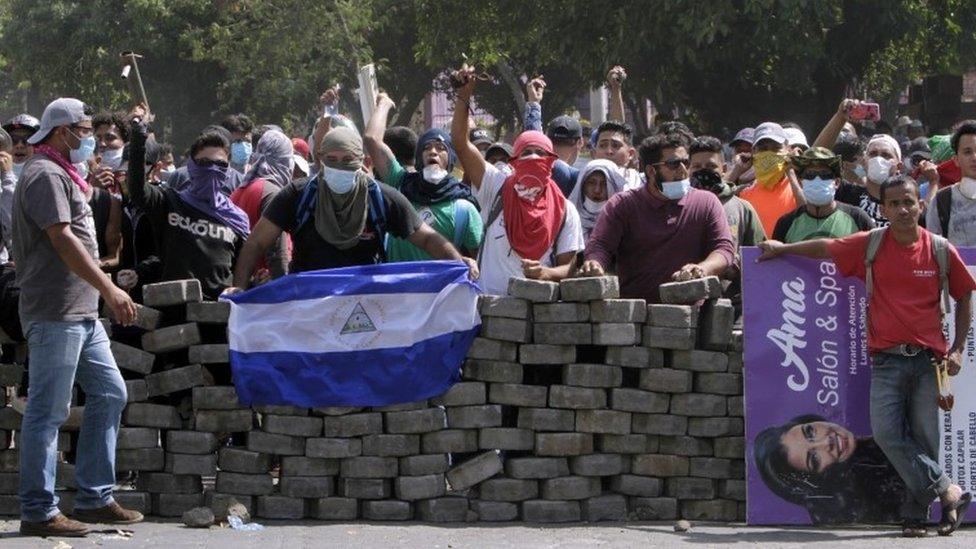Nicaragua crisis: One student killed as bloody church siege ends
- Published
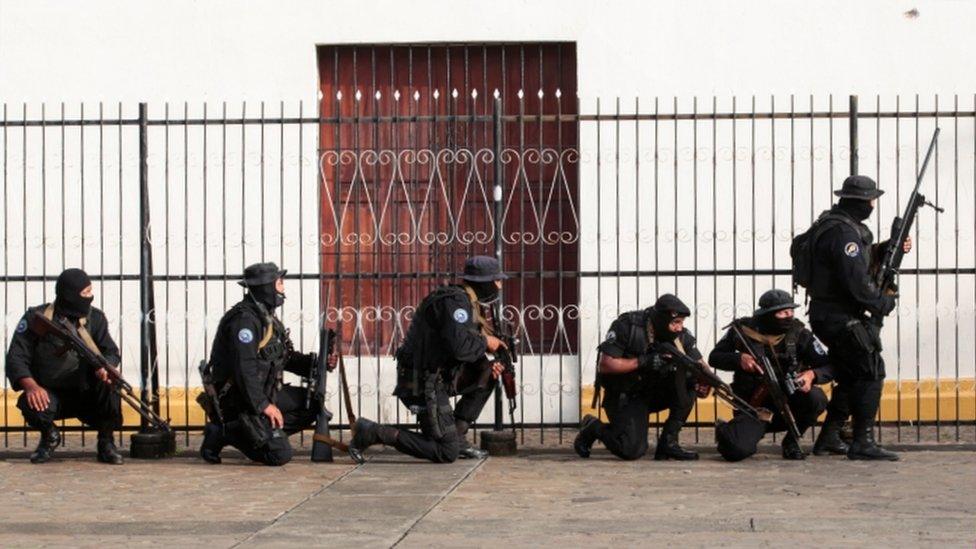
Nicaraguan paramilitary forces clashed with anti-government protesters
At least one student has died during an attack on a church where dozens of protesters had sought shelter after more violence erupted in Nicaragua.
The students, who had been taking part in protests on a day of a national strike, came under attack from paramilitaries and became trapped in the church on Friday evening.
Protesters have been demanding the resignation of President Daniel Ortega.
More than 300 people have died during months of anti-government protests.
Following the latest clashes, a group of about 150 students were holed up in a church building close to the main university in the capital, Managua, along with priests and journalists.
The Nicaraguan Bishops' Conference said the young man killed in the church attack had been hit in the head by a bullet during what it referred to as a fierce assault carried out by police and paramilitary forces.
There are also reports of a second student killed and several others injured.
"We were told that there were two dead and several wounded," said Cardinal Leopoldo Brenes as he arrived at the church of the Divine Mercy to mediate between the parties.
Students who were evacuated from the church will be transferred to the Cathedral of Managua, according to reports.
A journalist working with BBC Mundo, who is inside the church, earlier tweeted a picture of the body of the first victim. He says the student was called Gerald and was from Masaya, an opposition stronghold south of Managua.
Allow X content?
This article contains content provided by X. We ask for your permission before anything is loaded, as they may be using cookies and other technologies. You may want to read X’s cookie policy, external and privacy policy, external before accepting. To view this content choose ‘accept and continue’.

In footage posted online - which the BBC has not been able to independently verify - students appear to fear for their lives as pro-government paramilitaries launch their assault.
One young woman, who can be seen crying, asks for her mother's forgiveness.
Allow X content?
This article contains content provided by X. We ask for your permission before anything is loaded, as they may be using cookies and other technologies. You may want to read X’s cookie policy, external and privacy policy, external before accepting. To view this content choose ‘accept and continue’.

Before the siege ended, a few injured protesters were allowed to leave, as well as an American journalist.
Allow X content?
This article contains content provided by X. We ask for your permission before anything is loaded, as they may be using cookies and other technologies. You may want to read X’s cookie policy, external and privacy policy, external before accepting. To view this content choose ‘accept and continue’.

The death of a policeman has also been reported following clashes between protesters and a counter pro-government demonstration.
'Unacceptable'
The Catholic Church, which has been acting as a mediator in stalled talks between the government and the protesters, has denounced the violence.
Brazil has also denounced Friday's attacks by security forces and paramilitaries against students and civilians as "unacceptable".
"The escalation of violence against civil society, with physical aggressions against priests, journalists and human rights activists, are unacceptable," the Brazilian government said in a statement.
More than 300 people are reported to have been killed since a wave of protests against the government was triggered by changes to the social security system announced on 18 April.
The protests widened and quickly turned into demands that President Ortega step down.
The government accuses the protesters of plotting a coup d'etat against the president, who was re-elected to a third consecutive term in office in 2016.
It also accuses the protesters of holding the country hostage by blocking roads and hampering trade and normal business.
- Published10 July 2018
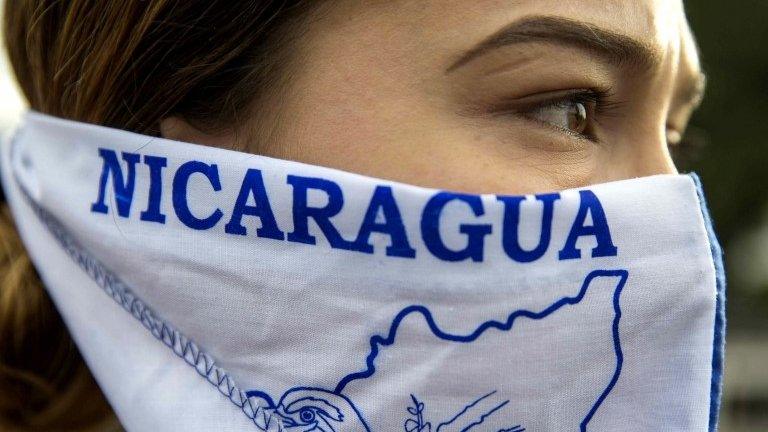
- Published9 July 2018
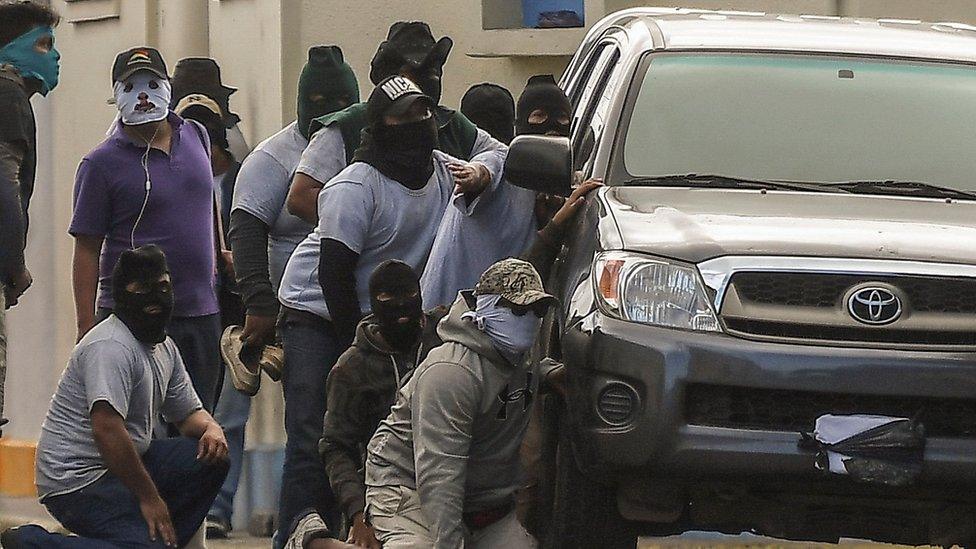
- Published24 June 2018

- Published29 May 2018

- Published7 May 2018
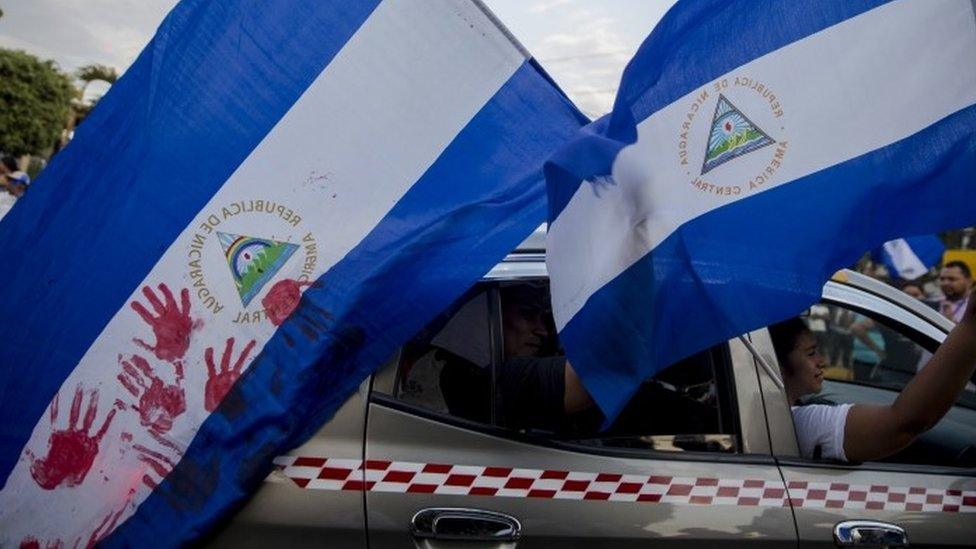
- Published23 April 2018

- Published22 April 2018
